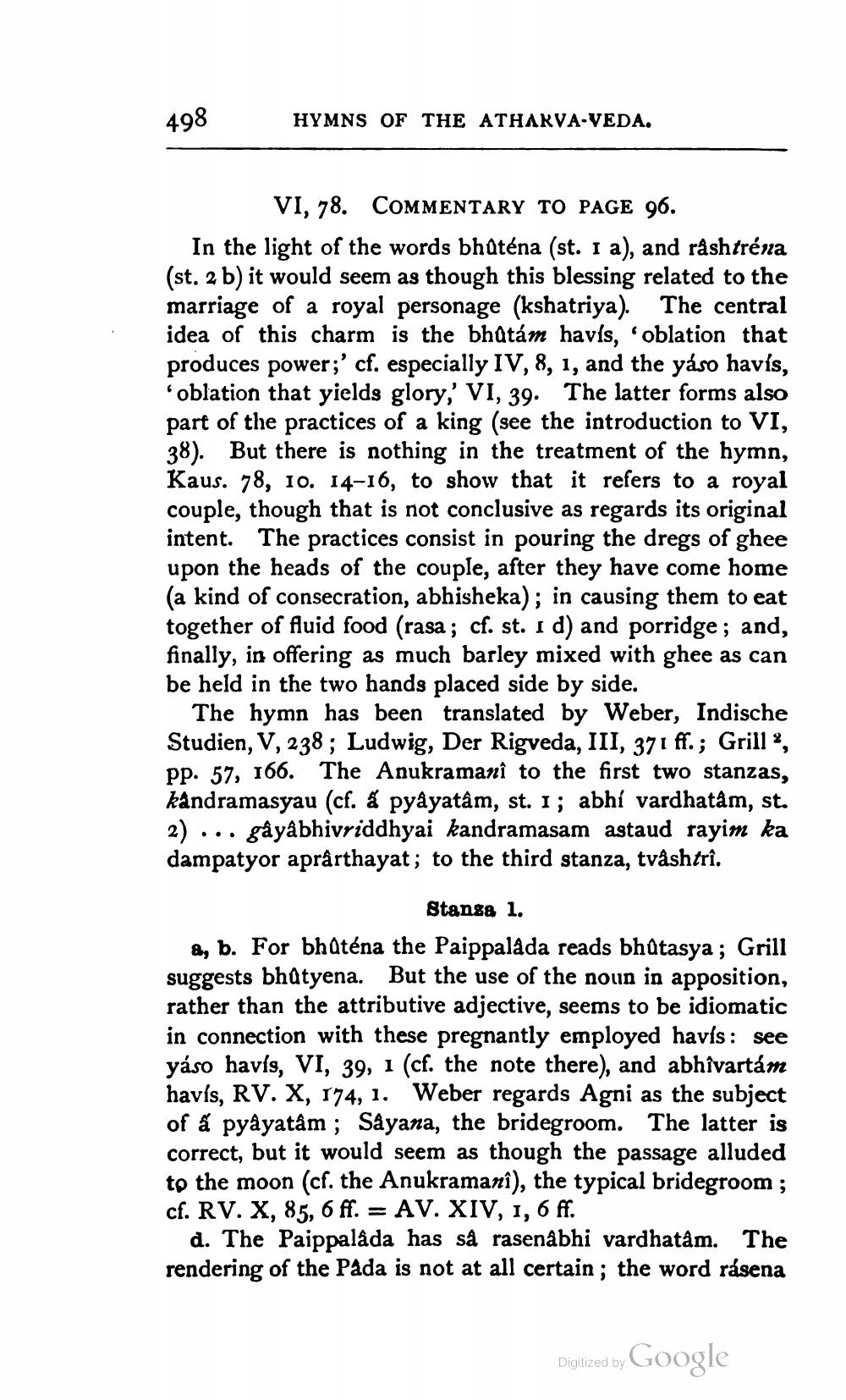________________
498
HYMNS OF THE ATHARVA-VEDA.
VI, 78. COMMENTARY TO PAGE 96.
In the light of the words bhûténa (st. I a), and râshtréna (st. 2 b) it would seem as though this blessing related to the marriage of a royal personage (kshatriya). The central idea of this charm is the bhûtám havís, 'oblation that produces power;' cf. especially IV, 8, 1, and the yáso havís, 'oblation that yields glory,' VI, 39. The latter forms also part of the practices of a king (see the introduction to VI, 38). But there is nothing in the treatment of the hymn, Kaus. 78, 10. 14-16, to show that it refers to a royal couple, though that is not conclusive as regards its original intent. The practices consist in pouring the dregs of ghee upon the heads of the couple, after they have come home (a kind of consecration, abhisheka); in causing them to eat together of fluid food (rasa; cf. st. I d) and porridge; and, finally, in offering as much barley mixed with ghee as can be held in the two hands placed side by side.
The hymn has been translated by Weber, Indische Studien, V, 238; Ludwig, Der Rigveda, III, 371 ff.; Grill 2, pp. 57, 166. The Anukramanî to the first two stanzas, kandramasyau (cf. a pyâyatâm, st. 1; abhí vardhatâm, st. 2)... gâyâbhivriddhyai kandramasam astaud rayim ka dampatyor aprârthayat; to the third stanza, tvâshtrî.
Stanza 1.
a, b. For bhûténa the Paippalâda reads bhûtasya; Grill suggests bhûtyena. But the use of the noun in apposition, rather than the attributive adjective, seems to be idiomatic in connection with these pregnantly employed havís: see yáso havís, VI, 39, 1 (cf. the note there), and abhîvartám havís, RV. X, 174, 1. Weber regards Agni as the subject of a pyâyatâm; Sâyana, the bridegroom. The latter is correct, but it would seem as though the passage alluded to the moon (cf. the Anukramanî), the typical bridegroom; cf. RV. X, 85, 6 ff. = AV. XIV, 1, 6 ff.
d. The Paippalâda has så rasenâbhi vardhatâm. The rendering of the Pâda is not at all certain; the word rasena
Digitized by
Google




